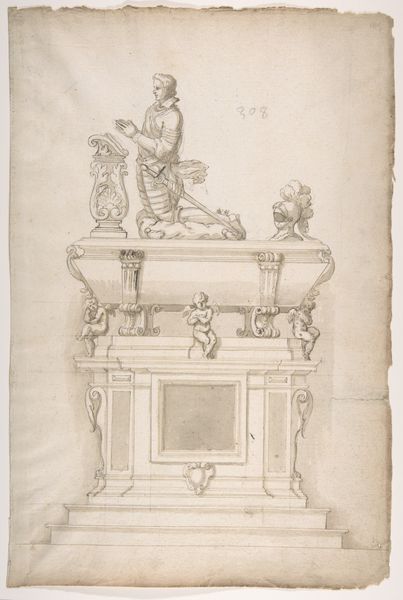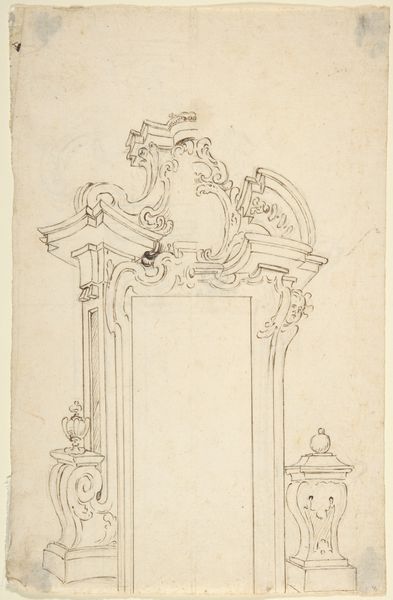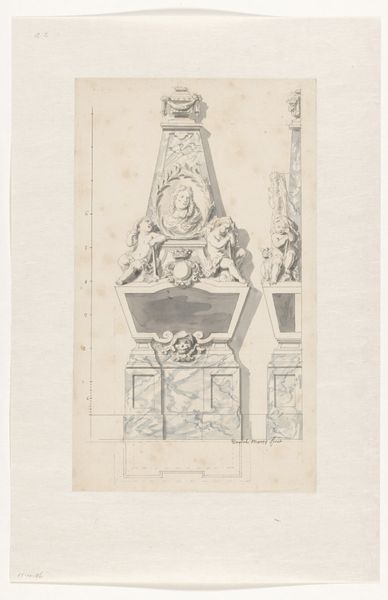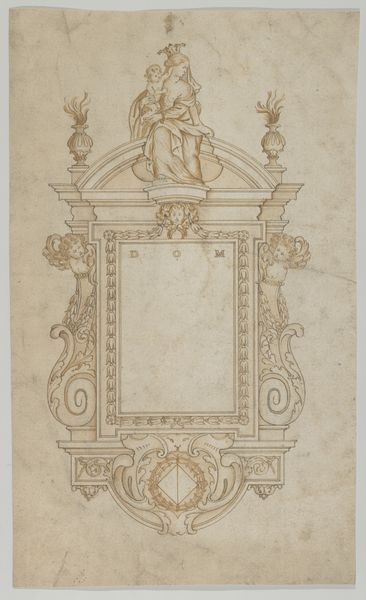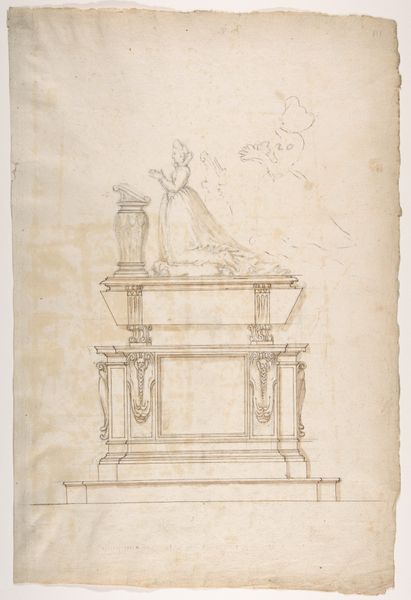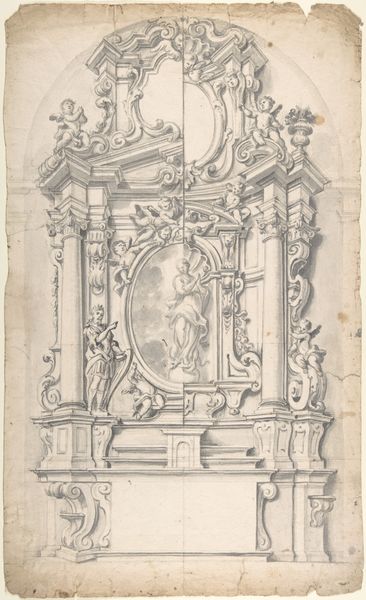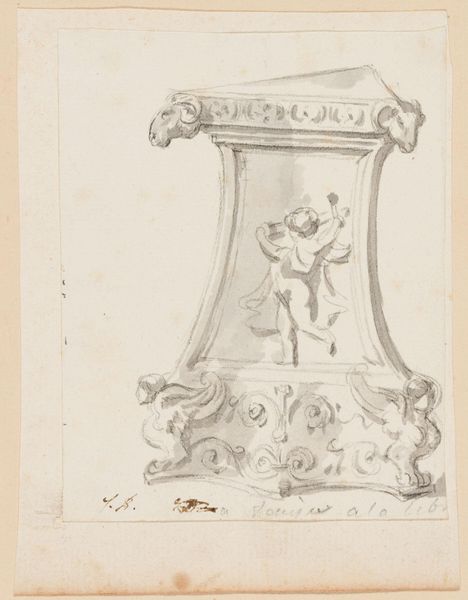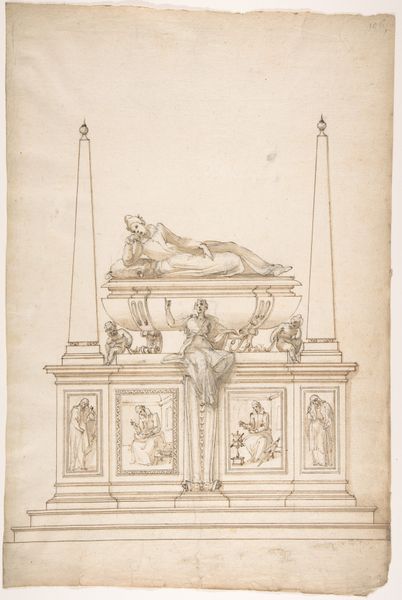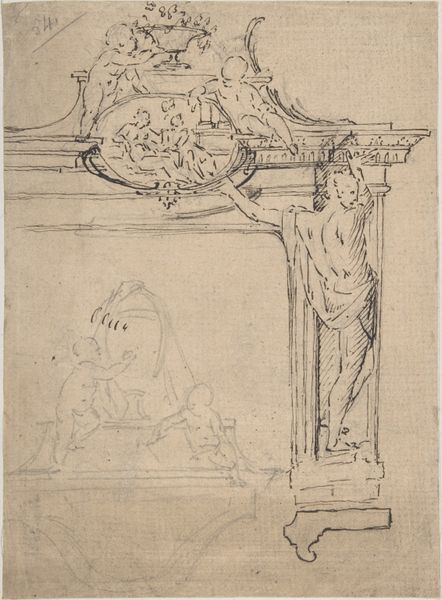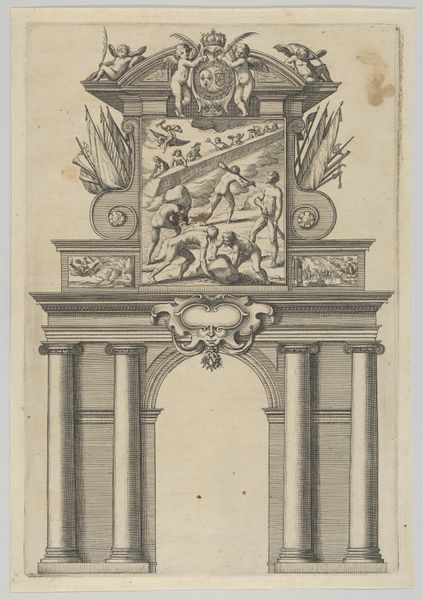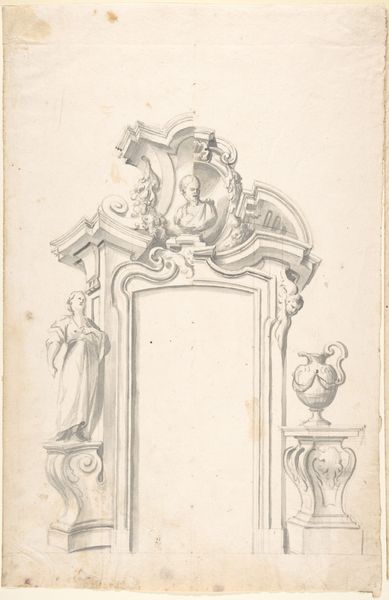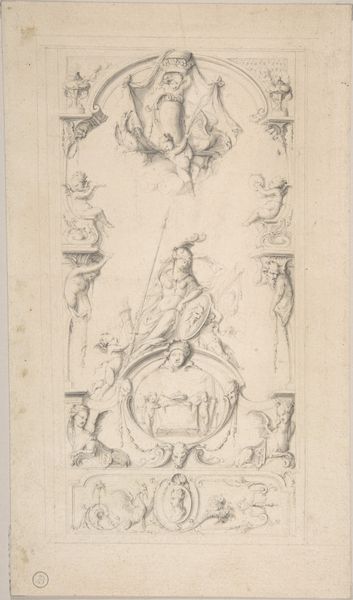
drawing, print, sculpture
#
portrait
#
drawing
# print
#
mannerism
#
figuration
#
11_renaissance
#
sculpture
#
history-painting
Dimensions: Sheet: 16 5/16 x 7 11/16 in. (41.5 x 19.5 cm)
Copyright: Public Domain
Curator: Welcome. We're standing before Giambologna's "Study for a Sculpture of Neptune," a drawing created sometime between 1540 and 1608, now residing here at the Metropolitan Museum of Art. It's a preparatory sketch for a fountain, rendered in pen and ink, as well as graphite, I believe. What are your first impressions? Editor: Bleak, maybe a little tense? The graphite gives it an unfinished air, almost like a ghost of a statue. Neptune himself seems caught mid-gesture, like he's about to strike, or maybe offer, his trident. It’s all rather imposing. Curator: Precisely! And Giambologna really captures that sense of poised power. Notice the dynamic contrapposto, the twisting of Neptune's torso. He’s the master of movement and spiraling figures. The figure is literally balanced between power and elegance, between the solid stability of his position and his potential for movement, this incredible, virile tension of creation! Editor: Absolutely. I can see how it could translate beautifully into sculpture. The way he's placed the god on top of those dolphins – that upward surge. But even within the drawing, you can see the formalism; all these geometric shapes, squares in the construction, contrasted with soft edges around the cherubic elements. It really underscores that classic Mannerist push and pull. Curator: Indeed. The sketch reveals Giambologna’s working process, the meticulous planning beneath the apparent dynamism. There’s something almost theatrical about Neptune standing atop that elaborate pedestal. One can picture this as a magnificent spectacle, meant to awe viewers. The Neptune fountain is in Bologna after all – how divine to think about what a central figure he made the god of the sea into within a terrestrial city! Editor: It makes you think about the relationship between a sketch and a finished work too, doesn’t it? You know, is this a record of an idea? Does it stand as its own completed work? Even unfinished, the composition and intensity give this preparatory image a certain sublime character of its own. Curator: Yes! It serves as a remarkable glimpse into the mind of a Renaissance master. A real treat for any admirer of form, fluidity, and fabulousness.
Comments
No comments
Be the first to comment and join the conversation on the ultimate creative platform.
